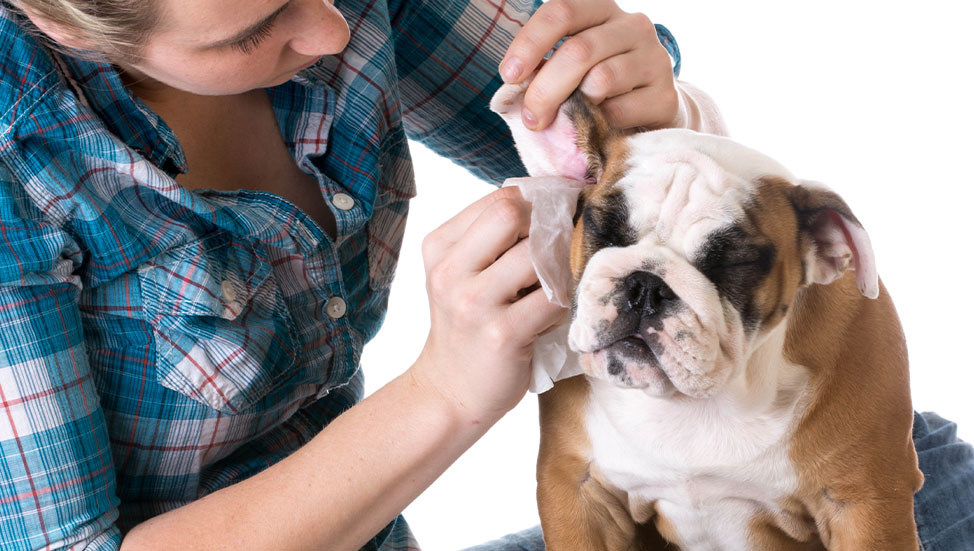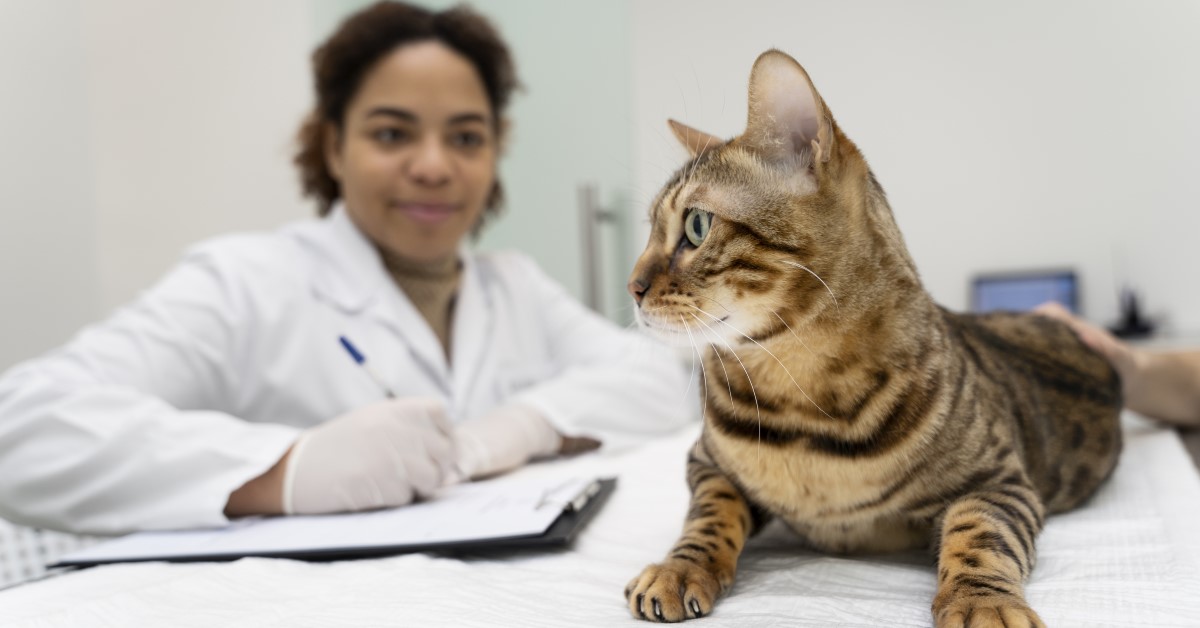How to Clean Your Pets' Ears
Let's be honest, can you remember the last time you cleaned your ears? It's probably been a minute. So, how about your pets' ears? It's likely been longer! But not anymore. Together, we'll cover how to know when your pet is itching for an ear cleaning and when the time come, how to do so!

Simple ear cleaning is a great way to keep your pet happy and help prevent painful and problematic ear infections. Pet owners can do regular ear cleaning at home with just a few simple supplies and every pet parent should try to make ear cleaning a part of their pet’s general care regiment.
Signs Your Pet's Ears Are Dirty
Our pets are very good at hiding their discomfort, and pesky ear infections are no exception. If you have neglected routine cleaning for your pets' ears, you may start to notice some of the tell-tale signs that your pet is experiencing discomfort.
- Your pets' ears may give off an odor, which may be a strong, pungent odor or a slightly yeasty smell.
- Your pet may also start to dig at their ears, scratching them repeatedly. You may even notice some fur missing behind the ear, which has been rubbed off from repeated scratching.
- You may see that your pet whimpers or cries when he scratches his ear, which could be a sign that an ear infection has formed. If your pet is whimpering or in pain when scratching his ears, be sure to see a veterinarian to treat a possible ear infection.
Understanding Ear Anatomy
Just like humans, pets have an extremely complex ear structure. Without fully understanding how an animal ear works, it is impossible to correctly clean your pets' ears. The ear consists of several parts, which include:
- Pinna (Outside Ear Flap) — The Pinna is the outside part of the ear that folds over to cover the inside ear. While this part of the ear certainly should be kept clean, simply cleaning the pinna will not be enough to fight off possible ear infections with your cat or dog.
- Ear Canal — The ear canal is the long canal that leads from the outside of the ear to the inner ear and eventually leads to the eardrum. This part of the ear is “L-shaped” in dogs. When cleaning the ear thoroughly, it is essential to remember that the canal turns 90 degrees. Dogs who swim or are around water can easily get water trapped in the L-shaped bend in the ear, further leading to bacterial infection.
- Eardrum (Tympanic Membrane) — the eardrum is essential to your dog or cat's ear function and is mainly responsible for their sensitive hearing. When cleaning the ears, it is important not to push too deeply into the canal. Hitting the eardrum can cause permanent and painful damage to your pet's hearing.
What Causes an Ear Infection?
Ear infections in pets are one of the most common health complications that pet owners have to treat. They can be persistent and difficult to treat once an infection takes hold.
Ear infections can come from many sources, including allergies, bacteria, yeast production, or even hair growing inside the ear. With the intricate shape of your pet's ear, bacteria and dirt can quickly become trapped and seasonal allergies can make irritation, dust, dirt, and dander more prevalent.
Keeping your pet's ears clean and clear is a great way to help prevent ear infections in your pet. Be sparing with your pet's ear cleaning, though. Too much cleaning can irritate the ears, which can invite other problems. It is a best practice to clean your cat or dog's ears about once per month.
Necessary Cleaning Supplies
Cleaning your pet's ears at home is easy to do and only requires a few basic supplies. To clean your pet's ears, you should have:
- Pet Specific Ear Cleaning Solution — This is available at many pet stores or often sold by a veterinarian. Be sure to pay attention to the specific type of ear cleaning solution you are purchasing. Some solutions are specially blended to help with heavy wax production, while others are anti-bacterial to help with chronic ear infections.
- Cotton Swabs — Having a few cotton swabs handy can help clean the small nooks and crannies that make up the folds in your pet's ears.
- Cotton Balls — Cotton balls can help you clean the pinna, or the outside of the ear, removing bacteria, dirt, and debris.
- Paper Towels/Rags — Ear cleaning can be messy, so having a few paper towels on standby can help clean up ear wax, dirt, and debris that may come out of your pet's ears.
Steps to Clean Your Pet's Ears
With just a few minutes and plenty of treats, cleaning your pets' ears can be a breeze. To thoroughly clean your pets' ears, you should:
-
Have your pet lie on their side if possible.
-
Fold back the ear flap, exposing the ear canal.
-
Squirt some ear cleaner directly into the ear canal and close the ear flap over the top of the canal.
-
Gently massage the base of the ear for a few minutes to help break up the built-up wax. You should hear a squishing sound as you massage the area.
-
Next, allow your pet to stand up and shake his or her head from side to side. Shaking will let the broken-up wax and debris fly out of the ear, removing it from the canal.
-
Gently use a cotton swab or cotton ball to wipe away and residual debris and residue. Be sure not to push the cotton swab too far into the ear canal.
-
If there is a great deal of residue still left inside the canal, it may be necessary to refill the canal with liquid, repeating steps 3 through 6 again. After the ear is thoroughly cleaned and clear, move on to the other ear, beginning at the first step.
Removing dirt, debris, and ear wax can help prevent ear infections so it’s a good idea to make ear cleaning part of your pet care regimen once a month. If your cat or dog is regularly playing outside or around water, it may be necessary to clean the ears more often. Furthermore, some dog and cat breeds are more prone to waxy build-up, so be sure to monitor your pet's ears and their behavior closely.
Just a few minutes of routine care for your pet can help prevent infection, leading to a much healthier and happier furry friend.
Ready to start saving money on pet wellness care?
Then take a look at Mint Wellness, the pet wellness plan that provides fast reimbursement on routine pet care. Save on vaccinations, wellness exams, preventatives, dental, and more!
Learn More


